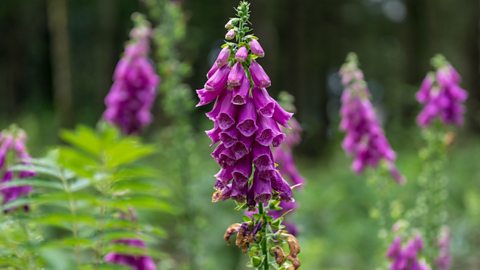The discovery of new drugs
New drugA substance that can change chemical reactions in the body. are being developed all the time. Historically drugs have come from nature, as parts of plants and microorganisms have been extracted. One of the most famous discoveries was made by Sir Alexander Fleming, who discovered penicillin from the Penicillium mould.
This antibiotic is still very important in the fight against disease.
Plant extracts

Certain drugs can be extracted from natural sources, and have been known about for a long time. For example, willow bark was used by the ancient Greeks to help cure fevers and pains. It was later discovered that the active ingredient was salicylic acid. This was modified by chemists into the substance we call aspirin, which is less irritating to the stomach than salicylic acid. Another example is the heart drug, digitalis which is extracted from foxgloves.
Plants are still important today, but most plant drugs are now created in a laboratory by scientists at pharmaceuticalRelating to medicines and drugs, and their production, sale and use. companies. These companies now have syntheticA material made by a chemical process, not naturally occurring. versions of the plant extracts, and use these as the starting point to develop new drugs.
New medical drugs have to be tested to ensure that they work, and are safe, before they can be prescribed.
Thalidomide
Thalidomide is a medical drug that caused unexpected and serious damage to unborn babies in the 1950s and 1960s. Thalidomide was developed as a sleeping pill, but it was also thought to be useful for easing morning sickness in pregnant women. Unfortunately, it had not been tested for use in this way.
Birth defects
By 1960 thalidomide was found to damage the development of unborn babies, especially if it had been taken in the first four to eight weeks of pregnancy. The drug led to the arms or legs of the babies being very short or incompletely formed. More than 10,000 babies were affected around the world. As a result of this disaster, thalidomide was banned. Drug testing was also made more rigorous than before.
Thalidomide today
Thalidomide is now used as a treatment for leprosy and bone cancer. Its use is heavily regulated, however, to prevent a repeat of the problems it caused in the last century.